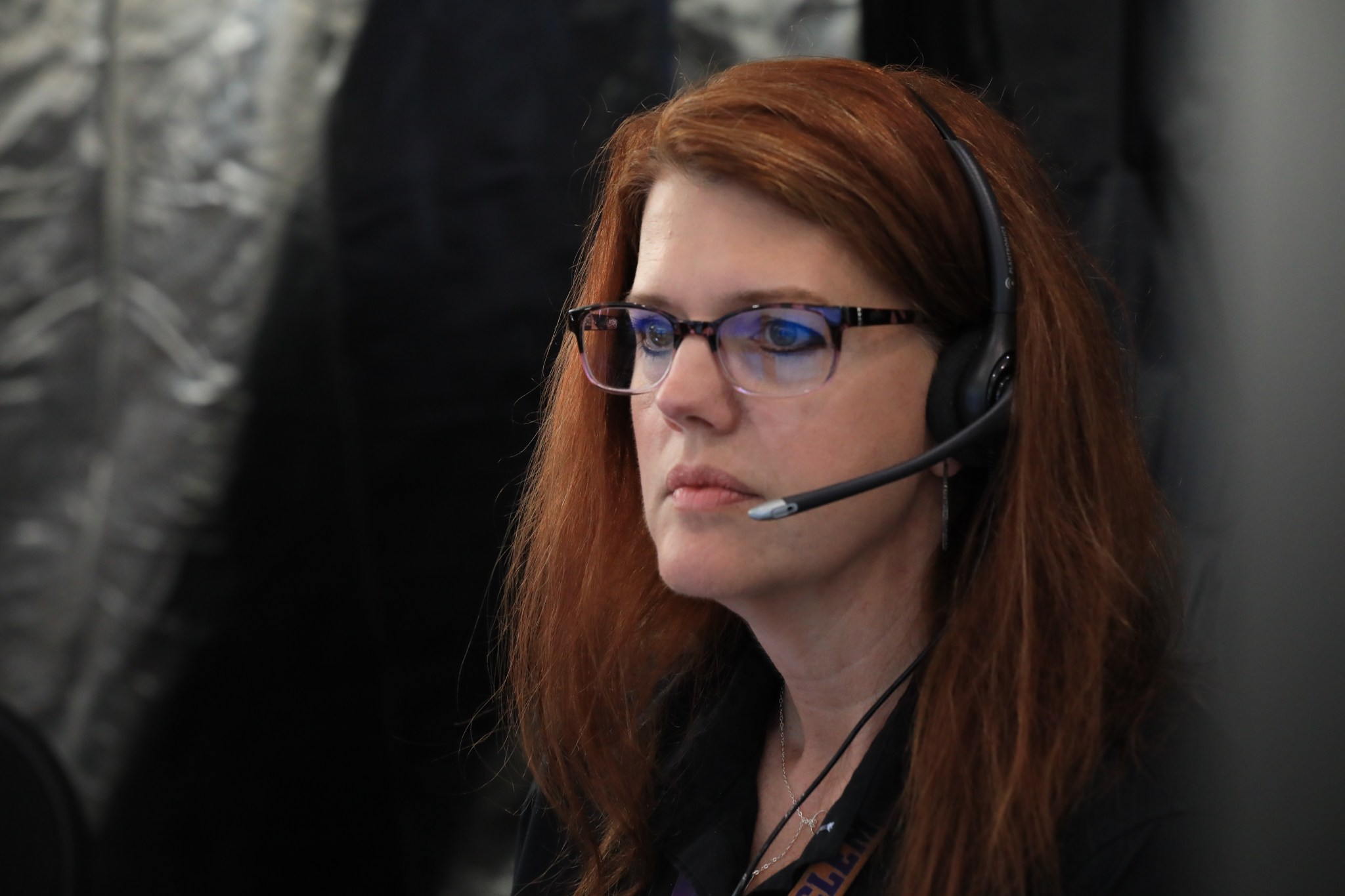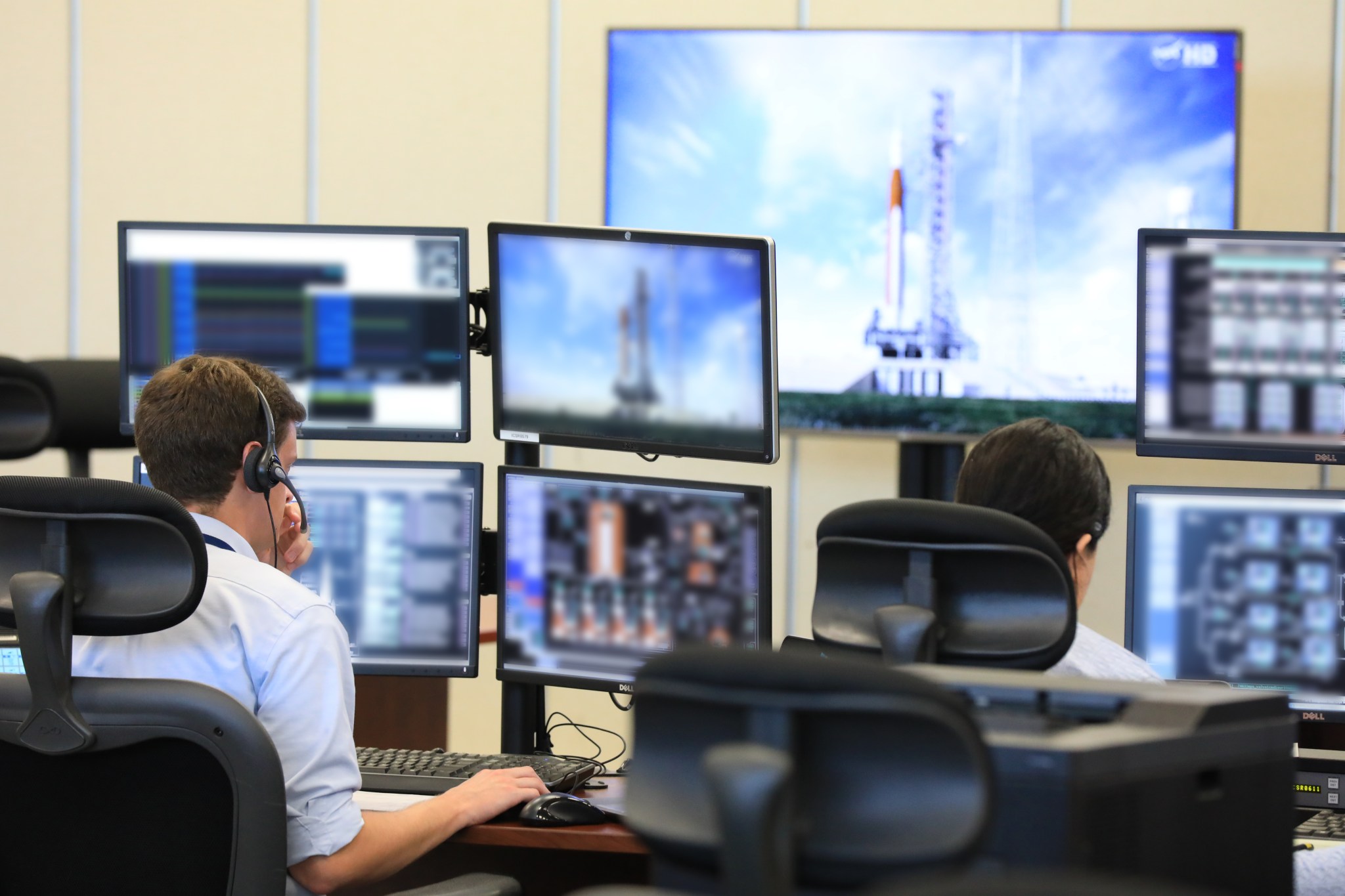By Linda Herridge
NASA’s John F. Kennedy Space Center
Exploration Ground Systems’ launch team at Kennedy Space Center in Florida, completed their first formal training simulation that will certify the team for the inaugural launch of the Space Launch System (SLS) and Orion spacecraft next year.
The team, led by Launch Director Charlie Blackwell-Thompson, performed a countdown simulation of loading the SLS with liquid oxygen and hydrogen — complete with surprise issues the team had to work real-time. The thousands of gallons of liquid propellants that will be loaded on launch day are needed to propel the agency’s powerful rocket to the vicinity of the Moon during Exploration Mission-1 (EM-1).
“Completing our first run for record simulation, getting that sim in the books is ‘no kidding’ one step closer to launch,” Blackwell-Thompson said. “I think about that SLS video that talks about the first step to deep space and how you have to take the first step. Well, this is our launch team’s first step.”
Success for Blackwell-Thompson was getting through the simulation without any significant unplanned problems. For her, it’s not about perfect execution during this sim. It’s not about a proficiency that could be expected at the end of a 30-year program. It’s all about learning.
“We are a team that is in the beginning of our training and certification process. It is about recognizing when we have issues and working through the problems as a team,” Blackwell-Thompson said. “We will take what we learn from these simulation tests and refine our processes and make adjustments when needed so that we are ready on launch day.”
The simulation began with “call to stations” in Firing Room 2 (FR2) of the Launch Control Center at 8 a.m. Normally, the team would conduct tests in Firing Room 1, where the actual launch countdown will be held for EM-1. With other testing and software development occupying that room, the decision was made to use FR2.
For this simulation, the countdown clock was in a T-6 hour and 40 minute hold. During an actual launch, the “go for tanking” would occur at this time. For this sim, no real tanking of rocket fuel occurred. A suite of emulators are used to provide the SLS, Orion and ground systems data. As the simulation continued, problems were introduced which the team worked through to solve.
“Our launch software, products and processes are all coming along. Everything is maturing, we’re all growing together,” Blackwell-Thompson said.
What’s next for preparing the launch team?
For the past couple of years, Blackwell-Thompson and the EM-1 launch team have been looking at what is required to make the launch happen. Currently, they are working on the launch commit criteria and all of the requirements for launch. These should be completed in May.
“We have a pretty robust training regime,” Blackwell-Thompson said. “For cryogenic loading alone, we’ll have at least seven more simulations. That’s because it’s a hazardous operation and it must be completed with exactness.”
For terminal countdown, which focuses on a different part of the launch countdown, Blackwell-Thompson plans to conduct 10 simulations. So there are at least 17 more training simulations in the team’s future before EM-1 sends an uncrewed Orion spacecraft on a three-week test flight thousands of miles beyond the Moon and back home to Earth.
The president’s direction from Space Policy Directive-1 galvanizes NASA’s return to the Moon and builds on progress on the Space Launch System rocket and Orion spacecraft, collaborations with U.S industry and international partners, and knowledge gained from current robotic assets at the Moon and Mars.

























